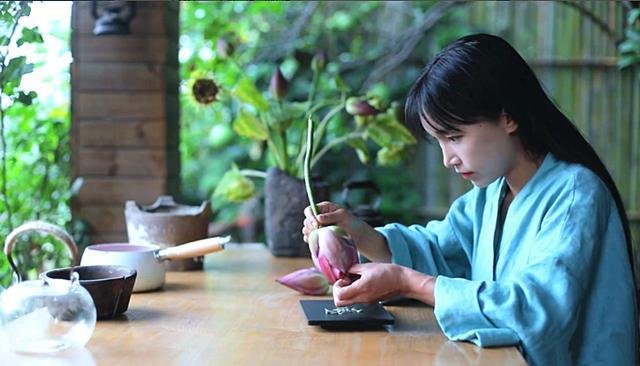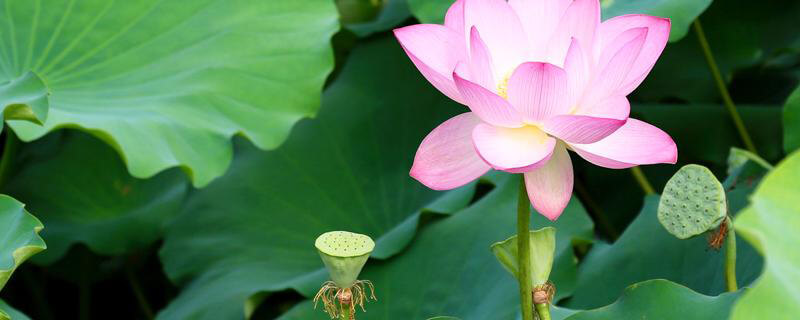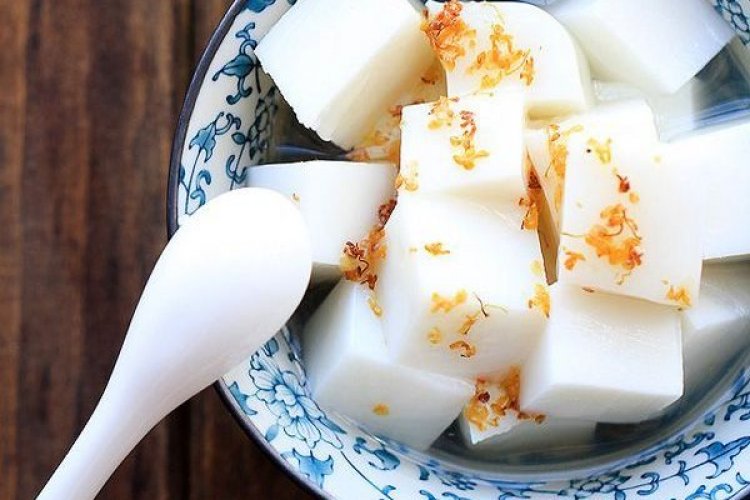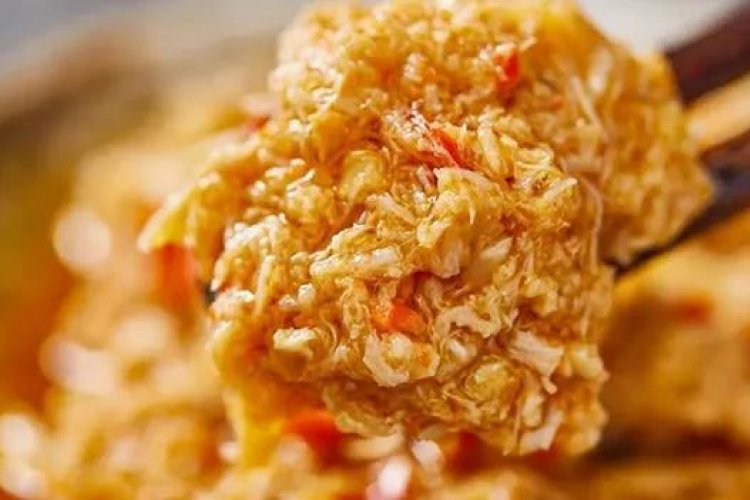All You Can Eat: Making Good Use of Lotus for Summer
You may have noticed that this year’s summer in Beijing is particularly humid and rainy. While so much water may be good for vegetation and the underground water level of the capital, according to traditional Chinese medicine, the steamy weather can also cause various health issues, from minor afflictions such as pimples to more serious ones, such as gout or even cardiovascular diseases. One positive, though? The abundant rainfall means the lotus season is coming! In addition to being beautiful to look at, the elegant lotus plant is also known for its versatility as an ingredient in the kitchen. To help you make better use of this seasonal treat, I have collected a few recipes from the internet, each making use of a different part of the lotus plant, for you to experiment with this summer.
Using Lotus Seeds

Compared to days when sunlight is scorching hot outside, on days of high humidity, people may not exactly thirst for water. However, this doesn’t mean you are less likely to be dehydrated. On the contrary, the sauna-like weather may actually squeeze the liquid and electrolytes out of your body before you even know what hit you! Sure, you can survive by devouring watermelon and popsicles as if your life depends on it, but if you are not keen on spending hours contorted over a toilet for a few days afterward then that road may not be the best way to go. Instead, try the more traditional way to stay hydrated and healthy this summer: mung bean multigrain porridge. This congee combines mung beans and lotus seeds— two ingredients that, according to traditional Chinese medicine, are essential for cooling.
Green Bean Multigrain Porridge (Recipe from Noob Cook)
INGREDIENTS:
6 tbsp (90g) green bean (mung bean/绿豆)
hot water to soak the beans
4 cups (stovetop) or 3 cups (rice cooker) water top-up whenever needed
Multigrain rice mix:
1 cup (180g) white rice short-grain preferred as it makes the porridge more starchy
4 tbsp (60g) red or brown rice
18 (about 20g) dried lotus seed middle green shoot removed if any. (This is because the green sprout inside the seed is extra bitter, however, many people also believe that they have better cooling effects, so keep them intact if you want to give it a try)
15g shelled pumpkin seeds optionally
10g dried lily bulb optional
DIRECTIONS:
Preparation
Soak the green beans in hot water for 3 hours. Rinse the beans and set them aside. (It will help them to be cooked faster and let the porridge reach the mushier texture, you can also soak them in the fridge overnight or cook them after rinsing directly instead)
Wash the multigrain rice mix with some water in a pot, giving the contents a few swirls. Rinse and drain the water.
Rice Cooker Method
Add the soaked green beans, washed multigrain rice, and 3 cups water. Set rice cooker to “Porridge” mode. Keep warm until the porridge is softened to liking or until ready to serve.
Stove-top Method
Add the soaked green beans, washed multigrain rice, and 4 cups water to the pot. Cover with lid and bring to a boil. Reduce heat to a simmer, leaving the lid slightly open with a small vent, and cook for about 40 minutes, or until the beans are softened to liking, occasionally stirring the sides and bottom of the pot.
Using the Lotus Root

Although lotus root is traditionally harvested in autumn, when the lotus flowers wither, it can be easily found in the market all year long now. Chinese scholars have admired the ability of lotus root to maintain its white color even when growing in the slimy, stinking mud, and herbalists believe it can stimulate the appetite and help with digestion. Many foodies like me find the crunchy texture and naturally sweet taste of lotus root deliciously addicting!
Lotus Root Salad (Recipe from China Sichuan Food)
Ingredients:
2 sections of lotus root
1/4 tsp. rice vinegar or lemon juice
Sauce I
2 fresh Thai red peppers
2 fresh green chili peppers
2 garlic cloves chopped
2 tsp. chopped ginger
1/4 tsp. sugar
2 tbsp. light soy sauce
1/2 tbsp. black vinegar
1/2 tbsp. chopped scallion
2 tbsp. vegetable cooking oil
1 small bunch of coriander
Sauce II
1 tbsp. light soy sauce
1/2 tbsp. sesame oil
2 garlic cloves chopped
2 tsp. chopped ginger
1/4 tsp. sugar
1/2 tbsp. black vinegar
1-2 tbsp. LaoGanma chili sauce or Chinese red oil
Instructions
Remove the joining part, peel the lotus root, and then thinly sliced.
Wash the slices under running water to remove the extra starch. This step can make the slices crunchier.
In a large pot with enough water, add 1/2 tsp rice vinegar or lemon juice. Soak lotus root slices for 10 minutes.
Bring a large pot of water to boiling and then blanch lotus root slices for 1 minute. Transfer out and soak the slices in chilled water until completely cooled. Drain. (Sometimes the lotus roots may turn a bit dark due to the oxidation, try drizzling them with a bit of lemon juice or white vinegar)
Salad with the sauce I
Drizzle light soy sauce, sugar, vinegar on the slices.
Heat vegetable oil in a small pot, add peppers, garlic, and ginger. Heat over medium to slow fire until aromatic. Add coriander stem in and continue cooking for 10 seconds.
Pour the oil over the slices. Mix well and enjoy.
Salad with the Sauce II
Add all the other seasonings to the serving plate and serve directly.
Using Lotus Leaves

Even though you can’t eat lotus leaves directly as you can other components of the lotus plant, lotus leaves are still a quite magical ingredient in Chinese culinary culture. Due to its size and relatively sturdy texture, the dried lotus leaf is one of the most popular wrapping materials in Southern China, especially for steamed cuisines. Not only do they do a great job holding the ingredients in the steamer to be cooked thoroughly, but lotus leaves also instill their unique fragrance into the dish during the process, which stimulates the diner's appetite...even during the steamiest days.
Sticky Rice with Chicken Lotus Leaf Wraps (Lo Mai Gai) (Recipe from The Woks of Life)
INGREDIENTS
FOR THE MARINADE:
2 tablespoon light soy sauce
1/2 teaspoon ground white pepper
1 tablespoon oyster sauce
1/2 teaspoon five-spice powder
1 tablespoon ginger (very finely chopped)
1 tablespoon Shaoxing wine
1 teaspoon cornstarch
YOU'LL ALSO NEED:
4 boneless skinless chicken thighs (cut into small chunks)
4 cups sticky rice (sweet rice)
2 tablespoons dark soy sauce
oil (for cooking)
6 cups mushrooms (we used shiitake and oyster mushrooms; coarsely chopped)
3 cups scallion (chopped)
1 teaspoon sea salt
5 whole lotus leaves (soaked in warm water for 1 hour, rinsed, stems trimmed, and cut in half––or parchment paper)
INSTRUCTIONS
In a medium bowl, stir together the marinade ingredients and add the chicken pieces. Stir well and refrigerate. Soak the sticky rice for 2 hours, drain, and mix with 2 tablespoons dark soy sauce. Set aside.
Over high heat, add 2 tablespoons of oil to your wok. When the wok is smoking slightly, add half the mushrooms and stir-fry until they’re browned, tender, and most of the moisture has evaporated. Remove from the wok and set aside. Do the same with the second half of the mushrooms. (Cooking the mushrooms in 2 batches prevents them from getting soggy). Set all the mushrooms aside.
Heat your wok over high heat again with a couple of tablespoons of oil. Brown the chicken. Mix in the mushrooms, scallions, and salt. Stir-fry for a couple of minutes to let the flavors meld together.
Mix this chicken mixture with the soaked rice. Now you’re ready to wrap them in the lotus leaves. Brush a small section on one end of each leaf lightly with oil. Put about ¾ cup of the mixture on the oiled area. Wrap each into a rectangle, tie with kitchen string, and steam for about 90 minutes.
You can serve with a little chili oil or allow them to cool, place into freezer bags, and freeze for later! When you’re ready to eat them, just steam them right out of the freezer for about 30 minutes.
Do you think that's all? Actually, the lovely lotus petals are edible as well and can be cooked in multiple ways, however, they are a bit tricky to handle for beginners. For those who wanna munch on this beautiful delicacy, I suggest to check out the famous content creator Li Ziqi's channel and see how she turned it into three different dishes.

Read: Seasonal Eats: Four Ways to Enjoy Sigua
Images: Noobcook, Chinasichuanfood, Thewoksoflife, Yanglegu, Liziqi







